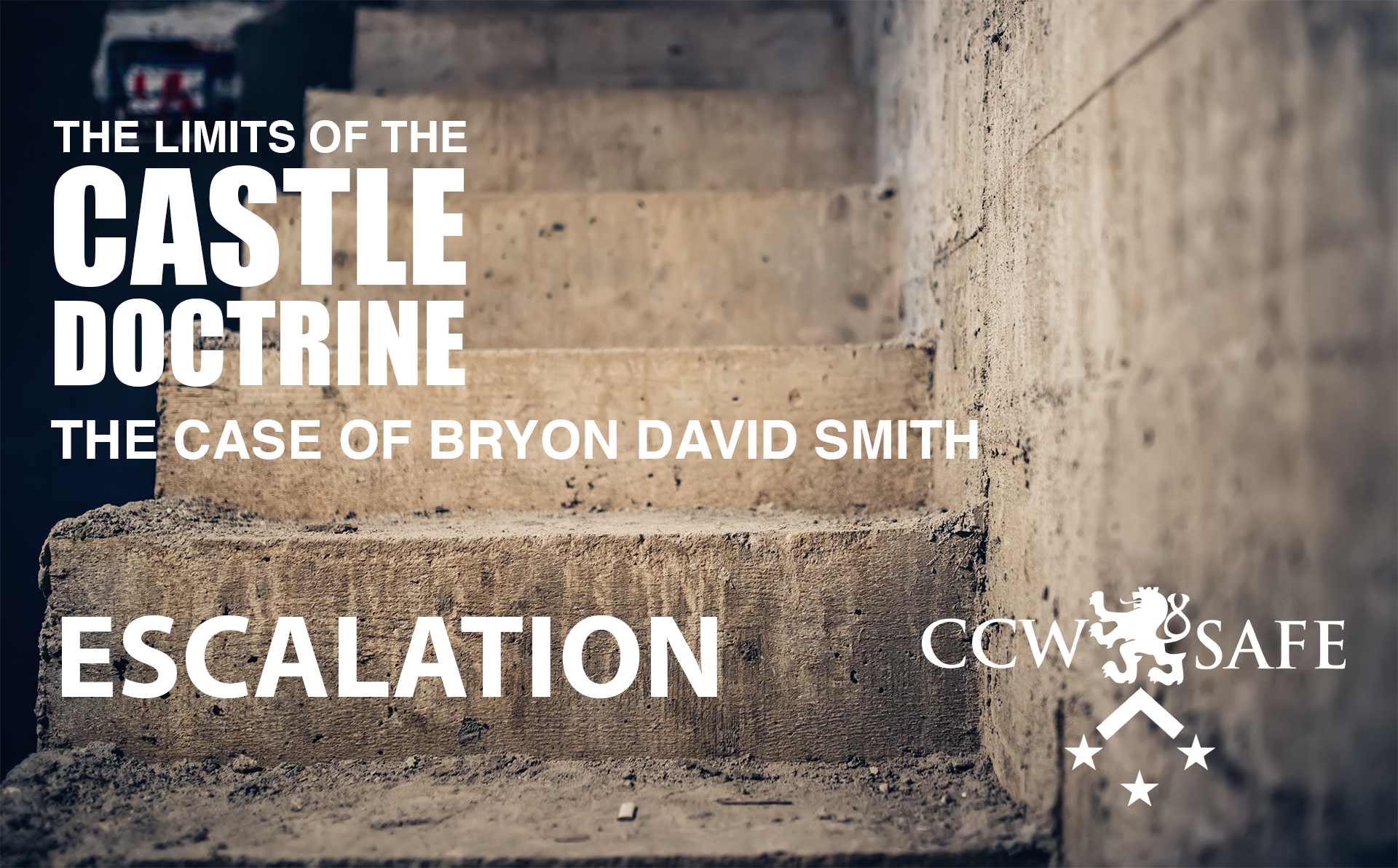
Posted on March 1, 2018 by Shawn Vincent in Shawn Vincent
The Limits of the Castle Doctrine- The Byron David Smith Case- Escalation
The Limits of the Castle Doctrine
Lessons from the Byron David Smith Case
Part 3: The Role of Escalation in the Prosecution of Byron David Smith
In our series The Four Elements of Self-Defense, we’re exploring how location, escalation, reasonable fear, and post-incident accidents can affect the legal defense in the wake of a self-defense shooting. In our last installment, we explored how the location of the shooting factored into the legal defense. In this installment we look at the role escalation played in the prosecution of Byron David Smith.
Byron David Smith shot and killed two burglars as they descended the stairs leading to the basement of his Little Falls, Minnesota home on Thanksgiving day 2012. The Morrison County Sheriff’s Department investigated a burglary at Smith’s home just a month before, and Smith claimed there were several other incidents in the preceding months. He was in such fear of another break-in, he had begun carrying a holstered pistol around the house on a regular basis.
“Whoever was breaking into my home,” Smith told investigators, “It was too much. I was no longer going to live in fear.”
In court, however, prosecutors argued that it wasn’t fear at all. They said Smith planned the shooting.
Earlier in the day, Smith moved his truck from his driveway to a spot down the street. Prosecutors said he did this to make it appear to would-be burglars that no one was home. If that was Smith’s intent, it worked. Seventeen-year-old Nick Brady and his cousin Haile Kifer were caught on Smith’s surveillance camera casing the home and peering into windows.
Smith then retreated to his basement where he waited for the teens. He sat in a chair at the bottom of the staircase, and next to him was a table with bottles of water, snack bars, and a novel. And he had two loaded firearms — a Ruger Mini-14 and a .22 revolver.
State attorney Pete Orput suggested to the jury that Smith’s seat resembled a deer stand, and the prosecutor argued that Smith planned in advance to lure Intruders into his home so he could kill them when they entered his basement.
To support his case, Orput pointed to a recording Smith made before the shooting where he seems to be practicing what he would say to an attorney. Orput also points to an audio recording Smith made of the shooting itself where he calls the Intruders “vermin,” calling them “social mistakes and social problems.” He says he’s was “cleaning up a mess.”
Moreover, Orput drew attention to Smith’s neighbor who testified that Smith said he had “solved the break-ins in the neighborhood.” The prosecutor argued that Smith wanted the teens to break in to his home specifically so he could shoot them.
In our exploration of self-defense, we find that gun owners can take actions to make the use of deadly force more or less likely during a threatening encounter. Every action taken serves to either escalate or de-escalate the potential for violence during an encounter.
In a home invasion the tension starts high. A homeowner can assume an intruder means harm, and there may be little opportunity to de-escalate the encounter. On the other hand, in a case like Smith’s, it seems as though Smith invited the confrontation by making his home appear unoccupied.
Moreover, Smith avoided obvious opportunities to prevent a deadly encounter. Brady romped around Smith’s home for several minutes before descending into the basement — yet Smith never called the police. Nor did he call for help in the then minutes that passed between the shooting of Brady and the shooting of Kifer.
While armed and waiting in his basement, Smith could have announced his presence. It’s unlikely the Intruders would have tried to engaged the homeowner; they probably would have fled.
But Smith didn’t do any of those things, and instead, what could have been an avoidable shooting resulted in tragedy for everyone involved.
The lesson for the gun owner concerned with home defense is that your weapon should be your absolute last resort. Take steps to make your home less inviting for burglars. If you can safely call 9-1-1 during an break-in, you should. If you can safely frighten away the intruder, you should. The more efforts you make to avoid using lethal force, the more likely it is you’ll be found justified should you ultimately be forced to pull the trigger on an intruder.
In our next installment, we’ll look at how the concept of reasonable fear factored into Smith’s legal defense.

Shawn Vincent- Litigation Consultant
Shawn Vincent is a litigation consultant who helps select juries in self-defense cases, and he manages public interest of high-profile legal matters. If you have any questions for Shawn, or would like more articles like this, let us know below!